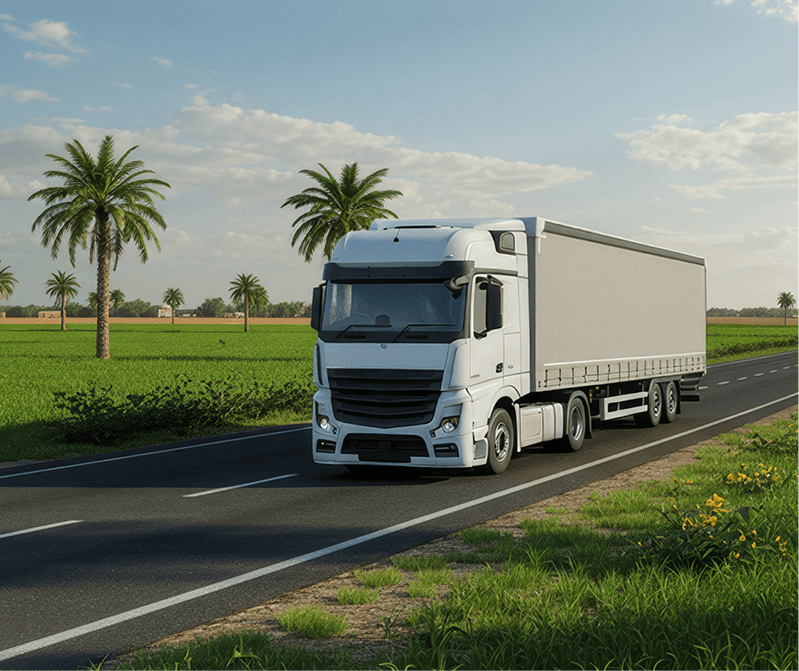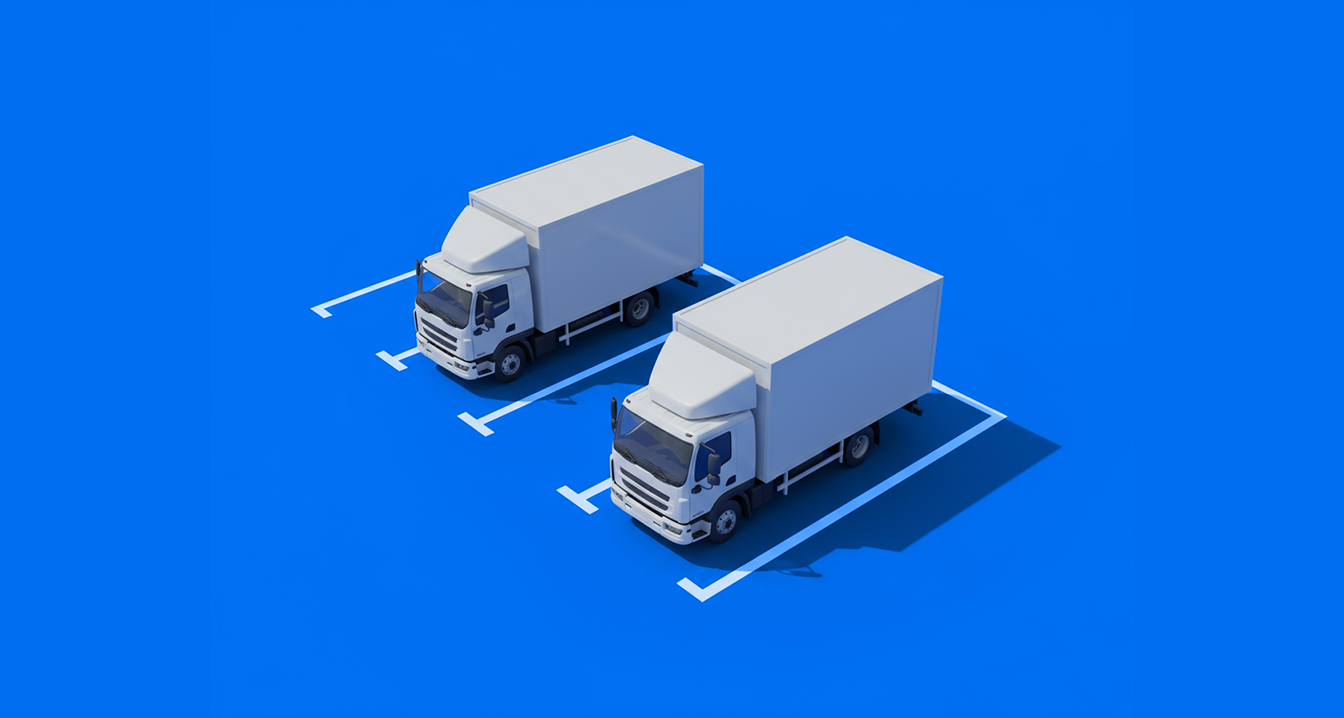
How does the distance needed to brake change when you double your speed?
Majd Eddin Safaya
June 28, 2025
Read time
Minutes to read
Imagine that you are driving your car at 60 km/h. Suddenly, without warning, the car in front of you stops. Without your awareness, you will press the brakes with full force, but the question arises in this case: how far will it take to stop your car completely?
Now... Imagine that you were driving the car at 120 km/h on the same road and the same situation happened to you... Do you think the difference between the two cases is only a few meters! ? Unfortunately... not
In fact, doubling the speed does not only double the braking distance, but also increases it in a frightening engineering way. As the speed increases, the distance the car needs to stop, and the risk may quadruple or more.
The problem is that most drivers think their skills are sufficient to deal with any situation, but physics does not negotiate. When an emergency occurs, all you have is distance, time and tires.
We'll call this article “The article of surprises”, because we'll reveal real numbers and statistics that will shock you, show you how the braking distance changes with speed, and why you need reliable tires that stand with you at critical moments.
In a study published by the U.S. National Traffic Safety Administration (NHTSA), it was found that 40% of rear-end collisions were due to the driver not estimating the distance needed to stop, especially at high speeds.
Braking distance:
The braking distance is the distance that the car needs to stop completely after the driver starts to press the brake pedal, in addition to the reaction distance, which is the distance traveled by the car from the moment the danger is seen until the actual braking begins. So:
The stopping distance = the reaction distance + the braking distance.
A simple example:
At a speed of 80 km/h, the driver usually needs 1.5 seconds to respond or actually pay attention to the danger. During this period, the car travels about 33 meters.
If the road is dry and the brakes are good, you may need an extra 36 meters to stop.
That is, the total is 69 meters so that the car can stop completely, And this is only at a speed of 80 km/h.
Braking distance: is the distance from the moment the driver presses the brake pedal until the car stops completely
Reaction distance: It is the distance traveled by the car from the moment the driver pays attention to the danger until the driver presses the brakes.
How does speed affect braking distance?
The effect of speed on the braking distance is not a linear relationship, as some people think. It is a quadratic relationship. That is, if the speed is doubled (x2), the braking distance is multiplied 4 times (x4). You may find that this percentage is normal, but my friend, this percentage may be the dividing line between life and death.
In general, this percentage is scientifically proven, according to a study published in Transportation Research Part F in 2020, which confirmed that increasing the speed from 50 km/h to 100 km/h increases the braking distance by 300% in dry conditions.
It should be noted that we are talking about dry conditions here. You don't mind if the roads are wet or the climatic conditions are unhelpful. Unfortunately, the disaster is greater...
Practical examples to illustrate the idea:
- The total stopping distance at a speed of 50 km/h = 26 meters is approximately.
- The total stopping distance at 100 km/h = approximately 83 meters.
- The total stopping distance at 120 km/h = 110 meters or more, depending on the condition of the tires and the road.
In a study conducted by the German ADAC Center, it was found that a car with worn tires needs 25% longer stopping distance compared to a car with the same specifications but with new high-quality tires.
Factors that affect the braking distance:
According to the Safe Driving Guide issued by the European Brake Foundation in 2022, stopping distance does not depend on speed alone, but is affected by several technical and behavioral factors that must be constantly paid attention to. These factors may double or reduce the distance depending on the circumstances, and these factors are:
Tire quality:
A worn tire seriously increases the braking distance.
Road condition:
Wet or slippery surfaces double the required distance.
Vehicle weight:
The greater the weight, the greater the force required to stop.
Brake condition:
Invalid brakes may lose their effectiveness at the critical moment.
Driver awareness:
A slow reaction may make all calculations pointless.
A common mistake among drivers:
Pride and pride in driving have been common since the first moment the car was invented. Believe me, no matter how much you search, you will not find a man or woman who has the audacity to admit that their driving is modest. Everyone is competing with Michael Schumacher in driving. Even if someone causes a terrible traffic accident, he has a thousand arguments and evidence that he has nothing to do with what happened and that what happened is an inevitable and inevitable judgment.
As for speeding and stopping, the common sentence for all drivers on the planet is:
“I'm speeding but I know when to stop and how to hit the brakes.”
We apologize to you for this word and expression, but this sentence is the garbage can. In emergency situations, the difference is time, not your skill. Physics does not know courtesy. If the speed increases, the distance required to stop increases, regardless of your driving experience.
True story: a real accident due to the braking distance
On November 8, 2021, a tragic accident occurred on the (M1) highway in Britain, where a truck crashed into two cars that suddenly stopped due to traffic congestion. Investigations published in the British newspaper The Independent confirmed that the truck driver was driving at 90 km/h and was unable to stop in time, despite putting full brakes on.
The investigation also found that the truck traveled a distance of more than 70 meters before hitting the first car and then pushing it to crash into the second car, resulting in the death of two people in the accident.
According to the report, the main cause of this painful accident was the miscalculation of the distance needed to brake at that speed, despite the fact that the tires were in good condition, but the high speed and close distance made it impossible to stop in time.
The previous story is a realistic and painful reminder that any delay in stopping can be very expensive.
How to reduce the braking distance?
Before we review the practical ways to reduce the braking distance, it is important to understand that this distance does not depend only on the brakes themselves, but on overlapping factors starting from: the quality of the tires and ending with the driver's awareness. Any negligence in one of these elements may mean a difference between stopping in time or colliding. Here are some tips to help you reduce the braking distance:

- Check the air pressure in your tires regularly.
- Replace worn tires before they weaken their response.
- Maintain the brake system and maintain it regularly.
- Drive at a safe speed that suits the road and conditions.
- Always keep an adequate safety distance.
Now... Can your trail tires protect you in such critical moments?
Simply... Because they are not just tires but an integrated safety system, every detail in these tires is designed to make a real difference between safety and danger, and perhaps the most important feature Your driveway frame For other tires, the following are:
- The materials used are carefully selected to withstand the high temperatures in the Gulf.
- The grooves design and pattern are well thought out to achieve the best grip on wet roads.
- A fine balance of power and flexibility to increase stability when suddenly braking.
- Designed to achieve the highest possible grip in different road conditions.
- It has passed strict tests in slip resistance and downtime.
- It has the Saudi Quality Mark.
- Derbek has not only obtained the Saudi Quality Mark but has complied with its full standards in the manufacturing and production process.
Buying Darbek tires is not a luxury or proof of sophistication and civilization. It is a must. It does not only beautify the vehicle... Rather, it protects those inside it.
In conclusion...
Doubling speed means not only an increase in adrenaline but also an increase in danger. So think before you hit the gas pedal. Remember that every additional 10 km in speed may cost you tens of meters of distance, or an irreversible moment.
And remember this tip: Let your decision in the frames reflect your awareness.
Choose your path... and always stay safe before you



